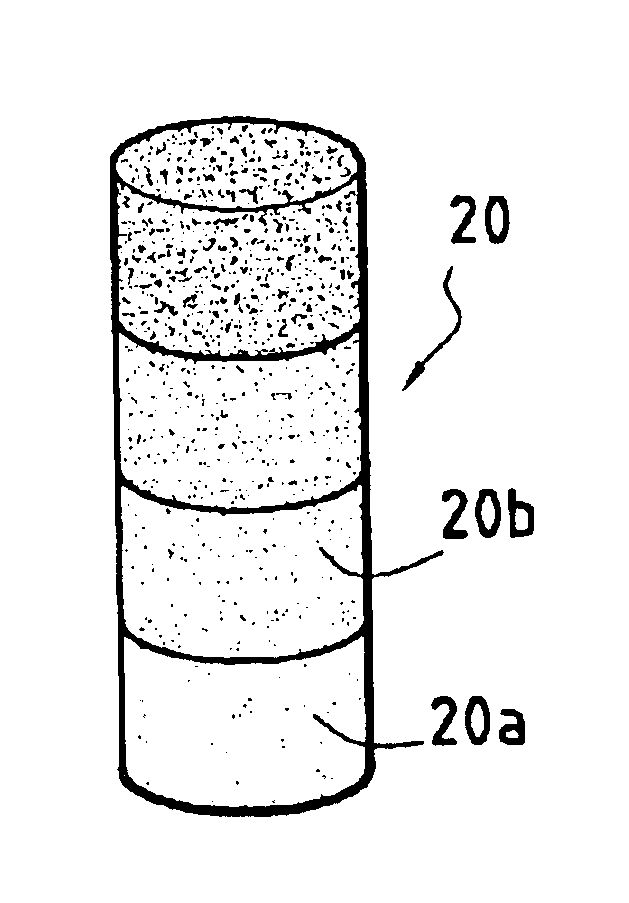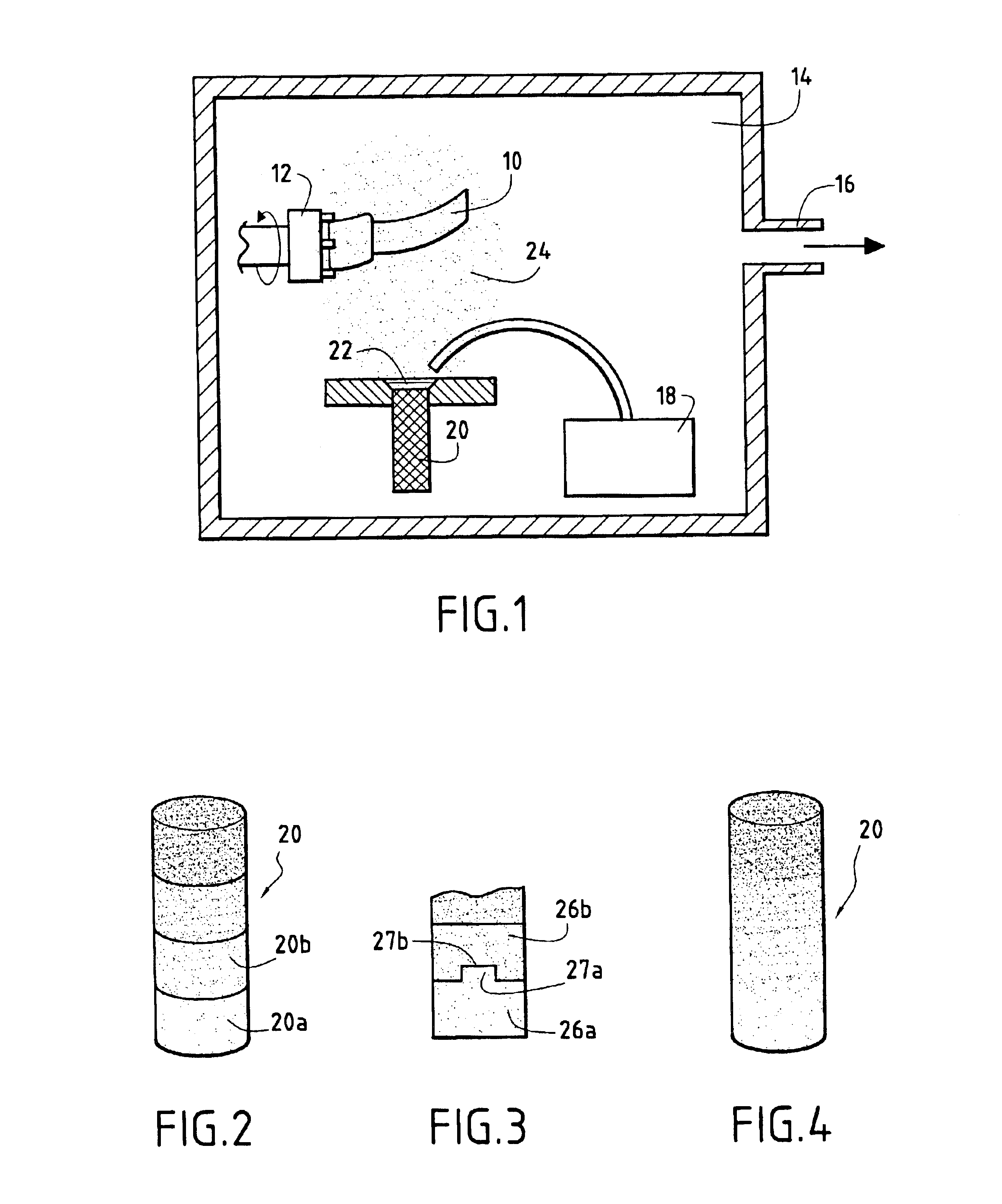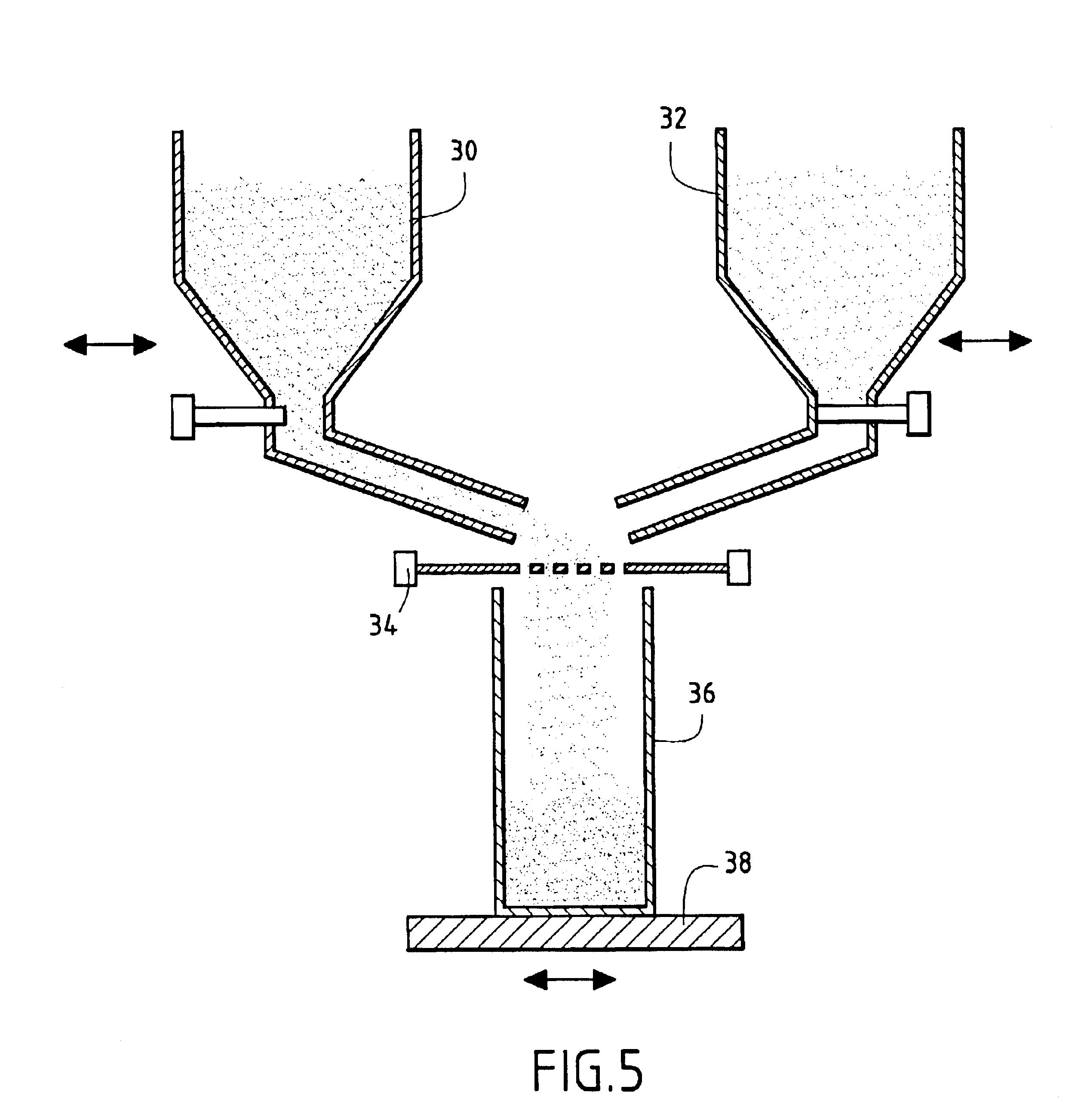Method of forming a ceramic coating on a substrate by electron-beam physical vapor deposition
a technology of electron beam and physical vapor deposition, which is applied in the direction of chemical vapor deposition coating, natural mineral layered products, machines/engines, etc., can solve the problems of not being able to make a single ceramic material coating, increasing the complexity of the physical deposition method, and high cost, so as to achieve accurate control
- Summary
- Abstract
- Description
- Claims
- Application Information
AI Technical Summary
Benefits of technology
Problems solved by technology
Method used
Image
Examples
first embodiment
In a first embodiment, which is more particularly suitable for a bar whose composition varies stepwise, the ceramic powders constituting each layer are mixed separately.
The powders are mixed in a liquid medium, for example in water or in an organic solvent. An organic binder may be added to the resulting slip so as to facilitate subsequent pressing of the powders. The powder mixtures, possibly including binder, are subsequently dried.
In the embodiment of FIG. 2, where the bar is made as a single piece, the compositions as prepared in this way for the various layers are introduced in the appropriate order into a mold having the form of the bar that is to be made.
As shown in FIG. 5, these compositions may be stored in respective vibrating dispensers 30, 32 (only two are shown). The outlets from the dispensers are opened sequentially in the desired order. The powders pass through a grid or screen 34 and are received in the mold 36 which is carried on a vibrating table 38. The quantity ...
example 1
A bar made up of two distinct layers was made using an installation of the kind shown in FIG. 5.
A mixture of powders made up as follows was introduced into a first dispenser:
93 grams (g) of zirconia powder ZrO.sub.2 and 7 g of yttrium oxide powder Y.sub.2 O.sub.3 in the form of granules of size equal to about 150 micrometers (.mu.m) were mixed in an aqueous medium together with an organic binder; and
the mixture was dried.
A mixture of powders made as follows was introduced into a second dispenser:
93 g of zirconia powder ZrO.sub.2, 7 g of yttrium oxide Y.sub.2 O.sub.3, and 5.26 g of nickel oxide powder NiO in the form of granules of size equal to about 150 .mu.m were mixed in an aqueous medium together with an organic binder; and
the mixture was dried.
The powder mixture contained in the first dispenser was introduced initially into a cylindrical mold of circular section having a diameter of 50 millimeters (mm) and a height of 150 mm, until a depth of 75 mm was reached, after which the ...
example 2
A bar comprising a composition that varied without steps was made by means of the installation of FIG. 6 by introducing the same mixtures as mentioned in Example 1 respectively in first and second dispensers, i.e. ZrO.sub.2 +7% Y.sub.2 O.sub.3 and ZrO.sub.2 +7% Y.sub.2 O.sub.3 +5% NiO. A mold identical to that of Example 1 was filled as follows:
first dispenser set to maximum delivery rate for a length of time sufficient for obtaining a depth of powder in the mold equal to about 50 mm, the second dispenser being closed;
the first dispenser was closed progressively while the second dispenser was opened progressively so as to obtain a continuous composition gradient over a depth of about 60 mm in the mold; and
the second dispenser was fully opened and the first dispenser closed until the mold was completely full.
The powders in the mold were compacted by cold isostatic pressing at 60 MPa and the powders were then baked at 1230.degree. C. for 60 min.
After unmolding, a bar was obtained whos...
PUM
| Property | Measurement | Unit |
|---|---|---|
| temperature | aaaaa | aaaaa |
| pressure | aaaaa | aaaaa |
| size | aaaaa | aaaaa |
Abstract
Description
Claims
Application Information
 Login to View More
Login to View More - R&D
- Intellectual Property
- Life Sciences
- Materials
- Tech Scout
- Unparalleled Data Quality
- Higher Quality Content
- 60% Fewer Hallucinations
Browse by: Latest US Patents, China's latest patents, Technical Efficacy Thesaurus, Application Domain, Technology Topic, Popular Technical Reports.
© 2025 PatSnap. All rights reserved.Legal|Privacy policy|Modern Slavery Act Transparency Statement|Sitemap|About US| Contact US: help@patsnap.com



